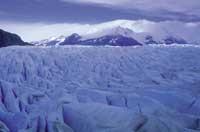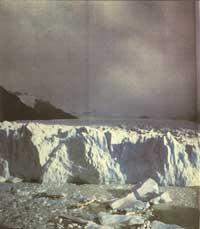Paine ice, southern beech and granite needles
1998/03/01 Arteaga, Zigor Iturria: Elhuyar aldizkaria
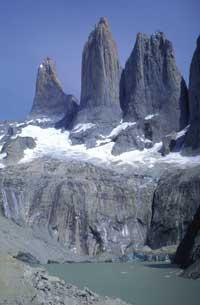
Torres del Paine National Park is located in Chilean Patagonia, southeast of the Andean mountain range and on the border with Argentina. The name of the park comes from the three vertical and giant granite towers that stand out in the center of the shelter. In this territory you can find spectacular and wide landscapes preserved by the towers on their flights. To the East the plain of Patagonia, also called Pampa, is lost in remote and to the West the Continental Meadow of Ice of the South, quite near the Pacific. In the park there are spectacular mountains between 2,000 and 3,000 m, surrounded by glacial lakes and large glaciers from the Ice Field. In this landscape so rough for the living, the trees have their place and in the valley bottoms extends the forest of Magallanes. In addition to the Condor, the guanaco, the grey fox, the puma, the caiquen and the meat of Magallanes, among many others, stand out. To date, 20 species of mammals and 115 species of birds have been identified inside the park.
This 2,422 km 2 National Park was declared in 1959 as one of the most recognized and prestigious protected parks in South America. Throughout the 70s its surface was expanded to be the currently known and on 28 April 1978 it was approved by UNESCO as a Biosphere Reserve.
In the territory of the wind
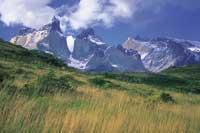
The proximity of the Pacific and the influence of Antarctica condition the climate of this territory. Although the influence of the sea calms slightly, the influence of the fronts of Antarctica makes the temperatures remain relatively cold throughout the year, cooler than expected for this latitude (51° S). The wind, almost always strong, blows from the southwest with cold and rainy fronts. The clouds are unloaded in the Andes and in the vicinity of the Ice Field, and to the east, when arriving at the plain of Patagonia, rainfall experiences a remarkable descent, establishing a precipitation gradient in the Park. The seasons are well distributed; the summer season is very rainy and windy and the temperature remains cool (10.8ºC on average), so it can produce snow. Moreover, in winter the cold increases, the wind slows down and rainfall decreases.
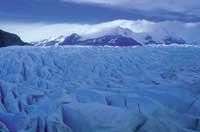
The Dickson, Zapata, Grey and Tyndall glaciers enter the Park from the 14,000 Km 2 Great Ice Field, which has remained a trail of glaciations. Glacial lakes abound, joined by a complex network of rivers and streams. Among the lakes are Del Toro, Sarmiento, Nordenskjöld, Grey and Pehoe, and between the rivers Paine, Grey, Pingo and Serrano. Over millions of years, glaciers have shaped the Paine Mountains, and today the sharp peaks covered by suspended glaciers form the center of the park. Among the mountains stand out the Paine Grande (3,248 m), with 3000 m of continuous slope, the Cuernos del Paine dressed in black hat (2,600 m of main summits), the Admiral Nieto (2,640 m) and the spectacular granite needles that form Torres del Paine (2,850 m of southern summits).
The origin of these mountains must be sought in the orogenic movements that occurred between the Cretaceous Superior and the Tertiary (between 135 and 36 million years ago), coinciding with the formation of the Andean mountain range. The mountains of Paine are formed by sedimentary rocks of the Cretaceous, but also granite materials appear, due to the intrusion of a pluto in the miocene (12 million years ago). Proof of these geological facts are the Cuernos del Paine peaks, with the granite bottom, but covered by a hat of dark sedimentary stone.
Puma area
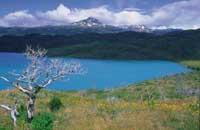
To the east of the cutting mountains, a landscape consisting of circular hills, lakes and bare steppes predominates. In the territory of the Puma different plant communities are developed depending on the type of soil, degree of precipitation, temperature, orientation, etc.
In the flatter places, under a cold semi-arid climate ( 400 mm), herbaceous communities grow that give it the form of steppe. Some species of the genus Festuca de hoja rígida are well adapted to these harsh conditions: F. gracillima and F. magellanica, for example. In general, they are low-cover communities with grasses such as Anemone multifida, Arjona patagonica and Calceolaria, the orchid biflora.
In areas where the landscape is not so flat, and approaching the humid mountains, the scrub appears. Most are thorny bushes, such as the Mullinum spinosum, the guanal bush ( Anarthrophyllum desideratum) and the calafate ( Berberis buxifolia).
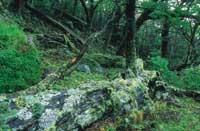
Covered with herbaceous plants and bushes, this area shows the greatest diversity of birds in the park. The bustling Queltehue (Vanelluschilensis) and the white-yellow ibis (Theristicus caudatus) are common birds, especially in areas where a wetland appears. In addition to those already mentioned, we can see the loika ( Sturnella loyca) with its strong beak eating steppe plant seeds. On the other hand, the slaughter or choique of Patagonia ( Pterocnemia pennata) is one of the most characteristic birds of the pampa. This relative of the African ostrich and the Australian female is less than the other South American shade ("Rhea americana") and since these two birds do not fly, but walk by land and run.
In this environment we can observe some of the most characteristic mammals of the park, some of them closely for their high reliability. Guanaco, a family member of the camel (“Lama guanicoe”), which although decades ago was in danger of extinction, today is abundant in the east of the park. More than 3,000 heads have been counted in recent censuses and the figure appears to be increasing. On the other hand, the gray fox ( Dusicyon griseus) looks good because it approaches the man. On the contrary, puma is difficult to see, as in addition to nocturnal is very scared. This large cat feeds heavily on hares and guanacos, and studies with radiotraquing have revealed that between 25% and 75% of guanaco children killed is due to it.
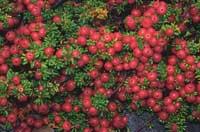
Among the hills of this landscape abound lakes, some large: Lake Toro is 196 km 2 and Lake Sarmiento is 22 km long. Birds of humid environments can be observed everywhere in lakes or streams or in flooded meadows. In the fast rivers, for example, you can see the duck of the currents ( Merganetta armata) swimming against the current. In slow waters we find the Huala murgila ( Podiceps major), the Swan lepabelza ( Cygnus melancoryphus) and the Caiquen ( Chloepasta picta).
Forest of Magellan
Entering between mountains, in the valley bottoms and on the slopes, we will meet the forest. Rainfall doubles or triples and the appropriate conditions for the cultivation of different tree species are given.
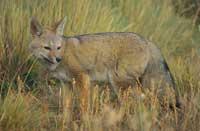
In the forest of Magallanes, very similar to other forests of the southern hemisphere, the southern beech predominates. In the charcoal, present-day South America, Australia, Tasmania and New Zealand were part of the continent of Gondwana, but 100 million years ago the continent began to fragment and the species of each territory evolved independently. Isolation for millions of years has led to the presence of numerous endemic plant species in these territories, although there is a great similarity in terms of gender and family. The Southern beech, of the genus Nothofagus, can be found in the four territories mentioned, but there are differences at species level. In Paine stand out three species, two crazy leaves: lenga ( Nothofagus pumilio) and ñirre ( N. antarctica), and a perennial, coigue of Magellan ( N. betuloides).
Due to the fact that the undergrowth is full of old fallen trunks, there are the right conditions for the cultivation of lichens, ferns and mosses, so these humid forests have a great coverage. Numerous shrubs such as chilco ( Fuchsia magellanica) and notro ( Embothrium coccineum) grow on the edges and edges of the forests.
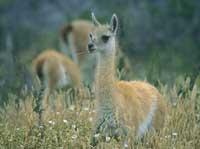
The diversity of birds in the forests is low and in them we will find few species, among which are the Pico de Magallanes ( Campephilus magellanicus), the Pitio ( Collaptes pitius) and the Cachaña of the family of psychoacids ( Enicognathus ferrugineus).
In the group of mammals, forest micromammals are the most abundant, such as the hairy mouse ( Abrothrix longipilis). The carnivores include the Montese cat Geoffroy ( Felis geoffroyi) and, among the great herbivores, the endangered Patagonian huemul deer ( Hippocamelus bisulcus).
XX. At the beginning of the 20th century, European settlers began to reach the territory of Patagonia and, in order to obtain land for livestock, they cut the forests and burned them. Livestock acquired great strength and, in the most fertile times, the Torres del Paine National Park had 32,000 sheep and 3,000 cows. Over the years, along with the official name of the protected environment, tourism replaced livestock. As a result of livestock farming, the best preserved forests today are found in the deepest races, such as the Frances River and the Ascensio Stream.
Cold desert
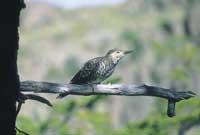
Above the limit of the forest, that is, above 600-800 m of height and where vertical walls predominate, cold and continuous wind do not allow the survival of many plants, besides that the soils are rocky and often covered with ice. On the other hand, the Ice Field and the glaciers that stretch along it cover a large surface and are authentic white deserts.
In the cold desert, vegetation a few centimeters high can barely cover more than 30% of the soil. Among the plants adapted to these harsh conditions are Gunnera magellanica, Gamochaeta nivalis and Nassauvia magellanica. In the humid rocky soils the Lycopodium magellanicum licopodiáceo of the cold areas is abundant and next to it we find the Empetrum rubrum. On these landscapes you can see fly the largest condor in the world, the Vultur gryphus.
Facing tourism
During the 1990s, tourism in South America's most prestigious National Park has been booming. Although the capital of the region of Magallanes, 400 km. from Punta Arenas, and access to the park, Puerto Natales, 150 km., are unpaved roads, today in summer, between December and March, it is easy to reach Torres del Pain. There are a large number of bus services and tourism agencies offer more and more possibilities, with an entrance to the park of about 50,000 people a year. Although the park's infrastructures are still under development, there are reception centres, campsites and foresters in charge of running the park.
The management of the park depends on the National Forest Corporation of Chile (CONAF). This state body, in addition to the administration of Paine Park, is responsible for the 86 protected natural areas of Chile. In total there are 32 National Parks, 43 National Reserves and 12 Natural Monuments that account for 18% of the Chilean surface.
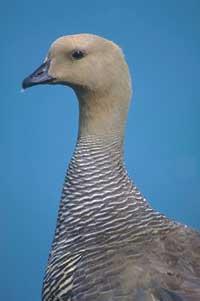
The park offers different possibilities. Paine is a unique place for nature lovers, as most animals can be seen closely. Both birds and mammals, allow to approach a few meters and do not panic if they approach calm and respectful. The vegetation is of special natural interest, especially the forests of Magallanes.
For the mountaineers, there is the possibility of performing exceptional trekings and day routes, among which is recommended the tour that gives the complete turn to the whole of Mount Paine for seven days. Every day, the road runs through spectacular landscapes and we can enjoy impressive mountains, giant glaciers, southern beech and other natural attractions.
In the world of mountaineering, the peaks and vertical walls of the Paine enjoy great fame, but since there are such harsh conditions for climbing, there is no massification. Among the coveted targets are the three Paine towers.
The ice of the glaciers, the beech forests of Magallanes and the vertical granite needles of Paine await you, so you know, if you want to escape our rainy winter in the next southern summer, Patagonia is waiting for your visit, yes, just in case you take the umbrella.

Gai honi buruzko eduki gehiago
Elhuyarrek garatutako teknologia



